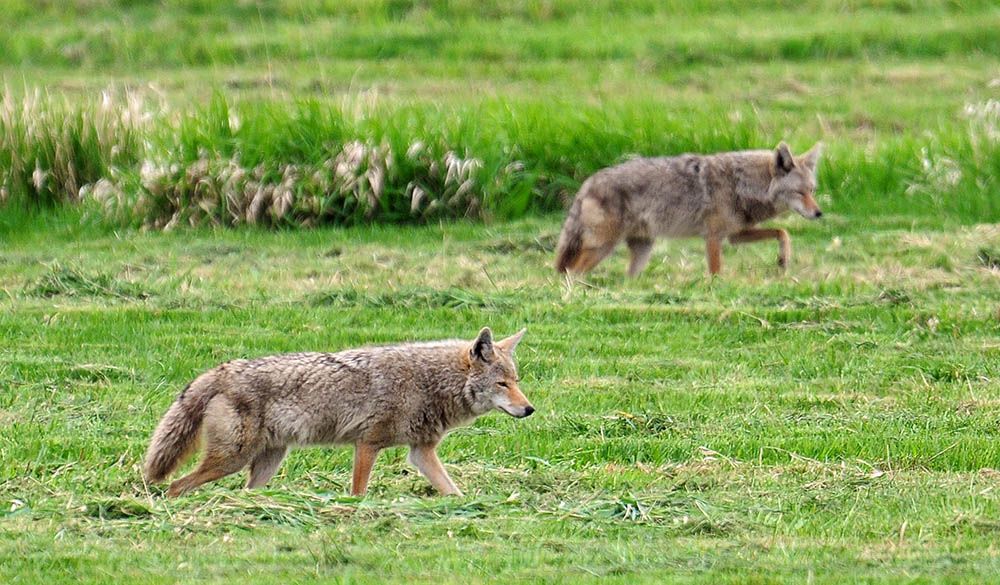
A pair of barred owls took up residence this month in a central Vancouver park, setting off something of a birdwatching frenzy in the neighbourhood.
A local Montessori school posted an Instagram photo of a class full of kids excitedly pointing up at the nest.
CBC News anchor Ian Hanomansing took to social media to marvel at the big crowds gathering, saying the owls have become a “sensation at our neighbourhood park.”
“It’s been great to see people over the last few weeks gather to watch and take pictures,” he wrote on Instagram. “Here’s my anecdotal observation: the correlation between owl watchers and friendliness is 100 per cent.”
Then someone took to reddit with more close-ups of the birds, sparking a backlash that led to the post being removed. Why the fuss? you might ask.
Turns out those redditors warning the owls might get spooked by all the attention, are on to something.
While many types of wildlife have proven to be highly adaptable to busy urban settings — think coyotes, raccoons, crows and rats — most of these animals “are naturally adapted to fear humans, and our presence can be a significant source of stress for them,” says Gabriella Wohlgemuth, manager of the Wildlife Rescue Association of B.C. based in Burnaby.
She says many birds and small mammals live in urban green spaces, and it’s up to us to give them some room if we want them to continue to thrive. (For that reason, Postmedia is not naming the park where the owls are.)
“Staying attentive to your surroundings is one of the most effective ways to spot these wild animals coexisting alongside us in urban settings,” says Wohlgemuth.
“Approaching too closely, particularly during sensitive times such as nesting and denning, can cause undue stress and may even lead to parents abandoning their young,” she warns.

Related
Owls are among the wild animals most at risk from too much human contact.
“Certain bird species, such as many owlets, ducklings and goslings, undergo a process known as imprinting,” she says. “During early life, these very young birds form strong attachments to their primary caregivers, which should be their parents.
“Imprinting upon their own species is essential for learning the skills necessary to survive in the wild. When humans intervene in this process by interacting with newly hatched babies, the impacts are irreversible, as the bond is fortified between baby bird and human rather than between baby bird and parent bird.
“This results in babies that cannot successfully survive into adulthood without human support.”
Too much human interaction is also problematic for adult wildlife. Offering them food can lead to habituation, “where wild animals lose their natural fear of people,” says Wohlgemuth. “This can cause unsafe interactions between wildlife and people and increases the risk of injury to both.”
The Vancouver park board advises wildlife watchers to keep at least 50 metres, or about half a soccer field, between themselves and animals like owls. And keep an eye on whether it’s returning the curiosity.
“If the bird looks towards you, or its behaviour otherwise seems to change in response to your presence, then you should move farther away,” says the park board. “And do not follow the bird if it leaves the site.”
Of course, distancing can be a challenge in a busy city park like the one where the owls recently decided to hang out.
But that’s why this and other wildlife sightings can be a learning experience. If you decide to have a look, keep your distance and move on after a few minutes, the park board suggests. And explain to your kids why you’re doing so.
“It can be exciting to come across wild animals in urban settings,” says Wohlgemuth. “However, the best thing that we can do for these animals is allow them to continue their natural behaviours undisturbed and educate others to do the same.”
While the rescue organization is happy to take in animals in distress, it’s always a last resort.
“Young animals have the best chance of survival when raised in the wild by their parents, who teach them how to find food and navigate the challenges of urban life,” she says.
“We only want to admit young birds when absolutely necessary.” Anyone who comes across an animal that appears to be in trouble is encouraged to contact a licensed wildlife rehabilitator rather than intervene.
Here is some more advice on dealing with wildlife in our urban environment, courtesy of the park board:
• Avoid using flash photography, especially in low light such as at dusk and dawn when owls are most active.
• Avoid loud noises and music that can scare wildlife.
• Keep your dog on a leash.
• Drones are not allowed in parks without a permit and should never be flown near nesting birds as it could lead to them abandoning the nest.
• Try not to disturb roosts, nests and all natural wildlife habitat. If you accidentally flush an owl from its roost, don’t pursue it and allow it to settle down on its own.
• Never bait or feed wildlife. It’s illegal in Vancouver and is subject to a $500 fine.
Anyone who spots someone disturbing an animal, nest or eggs is asked to call the RAPP line at 1-877-952-7277.